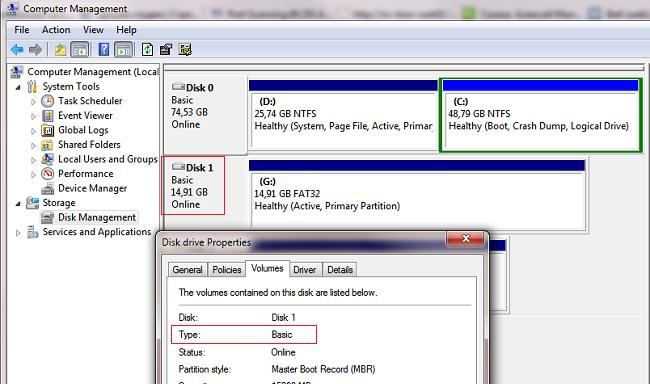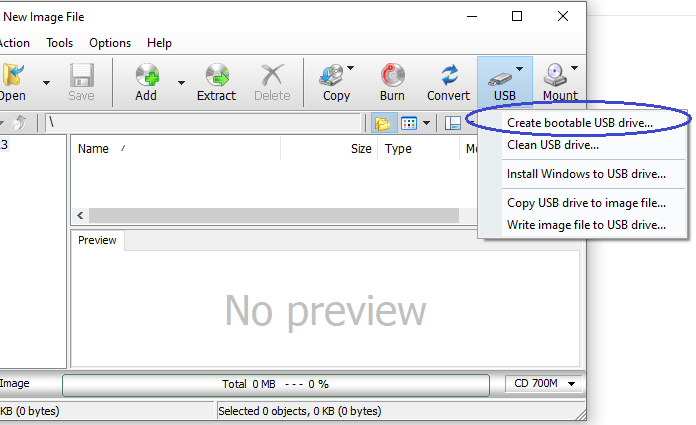

- #Mount disc image file to usb mac osx
- #Mount disc image file to usb install
- #Mount disc image file to usb portable
- #Mount disc image file to usb iso
Some of the tools require that this USB device is properly formatted and mounted while other tools will overwrite whatever is on the target device. Files on this USB device will be erased, so backup the files you want to keep before making the device bootable.
#Mount disc image file to usb iso
If the iso file is smaller than 2 GB, it is possible to use a 2 GB USB device, at least with some of the methods. To create a USB installation device, you will need:Ī 4 GB USB flash device/drive/stick. Note: This article uses the term "USB flash drive" alongside USB stick, USB drive, USB device, USB pendrive and thumb drive. UNetbootin, may create slightly different boot drives or if on UEFI might not work at all with Debian iso files due to a bug
#Mount disc image file to usb install
It will show the language selection and then the install menu, from which you can install Ubuntu onto the computer's hard drive or launch the LiveCD environment. Also, you can configure Ubuntu on the USB flash drive to save changes you make, unlike a read-only CD/DVD disk.īooting from a USB flash drive created with usb-creator alias Startup Disk Creator and mkusb will behave just as if you had booted from the install CD.
#Mount disc image file to usb portable
This may be necessary for most new portable computers without DVD drives and is handy for others because a USB flash drive is so convenient. Ubuntu can be installed from a USB flash drive. See also: Installation/FromUSBStickQuick for beginners starting from Windows.

Configure your computer to boot from USB flash drive and boot from it.Tools for this purpose are described in this help page. Put Ubuntu onto your USB flash drive alias 'stick' alias 'pendrive' alias 'thumb'.Download the iso file into your running computer (for example into the directory Downloads in the internal drive, not into the USB flash drive that you want to make into a USB boot drive).Ĭheck with md5sum (or another checksum tool) that the download was good. Get the correct Ubuntu installation file, 'the iso file', via this link or Ubuntu flavour via this link. The general procedure to install Ubuntu (or Ubuntu flavour, Kubuntu, Lubuntu, Xubuntu. Booting USB drives with grub2 and iso files 'grub-n-iso'.Portable installed system booting from UEFI and BIOS.Stable portable systems - good for USB sticks.
#Mount disc image file to usb mac osx
Creating a bootable Ubuntu USB flash drive from Mac OSX.mkusb - dd image of iso file to USB device safely.Install and run Startup Disk Creator alias usb-creator.Creating a bootable Ubuntu USB flash drive from Ubuntu.Pendrivelinux's Universal USB Installer.Creating a bootable Ubuntu USB flash drive from Windows.See DataRecovery for more information on tools like this. Tools like photorec can be used to search the disk image for anything that looks like a recognisable file and try and extract it. If the disk image does not contain any recogniseable partitions there may still be readable bits of data. Where START is the offset in bytes found with fdisk and MOUNTPOINT is somewhere to put it. Then you can try and mount that partition using: mount -o loop,offset=START disk.img MOUNTPOINT Which should indicate the presence of probably a single FAT32 partition, and tell you the offset in the img file (the number in the Start column). You can check if the image contains recogniseable partition headers with: fdisk -lu disk.img

If the disk image is of the whole disk (eg, /dev/sdb), rather than just one partition ( /dev/sdb1) you cannot mount the image directly (since the file will start with the disk partition table rather than the data partition). (Before doing anything with the disk.img, I would back it up.)


 0 kommentar(er)
0 kommentar(er)
